
Warehouses Lead March Pay Growth as Businesses Brace for Trade Policy Shifts
April 3, 2025
•
4
min


Every day, the Instawork platform handles thousands of transactions involving businesses and hourly workers, generating a large amount of data on hourly pay as well as other aspects of the labor market. This brief includes Instawork’s Pay Signal Index, which indexes trends in pay rates for hourly positions and a summary of labor market situation for Instawork Professionals (Pros). Since businesses can book shifts in advance on the Instawork platform, the metrics include forward-looking data for the current month as well.
Labor markets picked up in June after slight cooling in the past two months. Instawork’s Pay Signal Index (PSI) reads in at 51.55, up +1.34 from May. This ends two consecutive months of contraction in the PSI, and is the highest for this index since the start of the year. The recovery aligns closely with broader economic indicators like the Logistics Manager's Index which rose to 59.4 in May 2025 and inventory costs surging 2.8 points showing inventory pressures across multiple sectors.
Warehouse sector pay showed flatlining in June which likely indicates that the surge from companies holding inventory that was "rushed into the country earlier this year" is cooling now and creating downstream effects on labor demand and wages. Hospitality pay on the other hand rose as consumer summer travel spending kicked in.
Instawork's early data for July shows a seasonal regression downward in pay likely due to the continuing trends in warehousing and hospitality cooling off. You can read more about the Instawork Pay Signal Index methodology here.
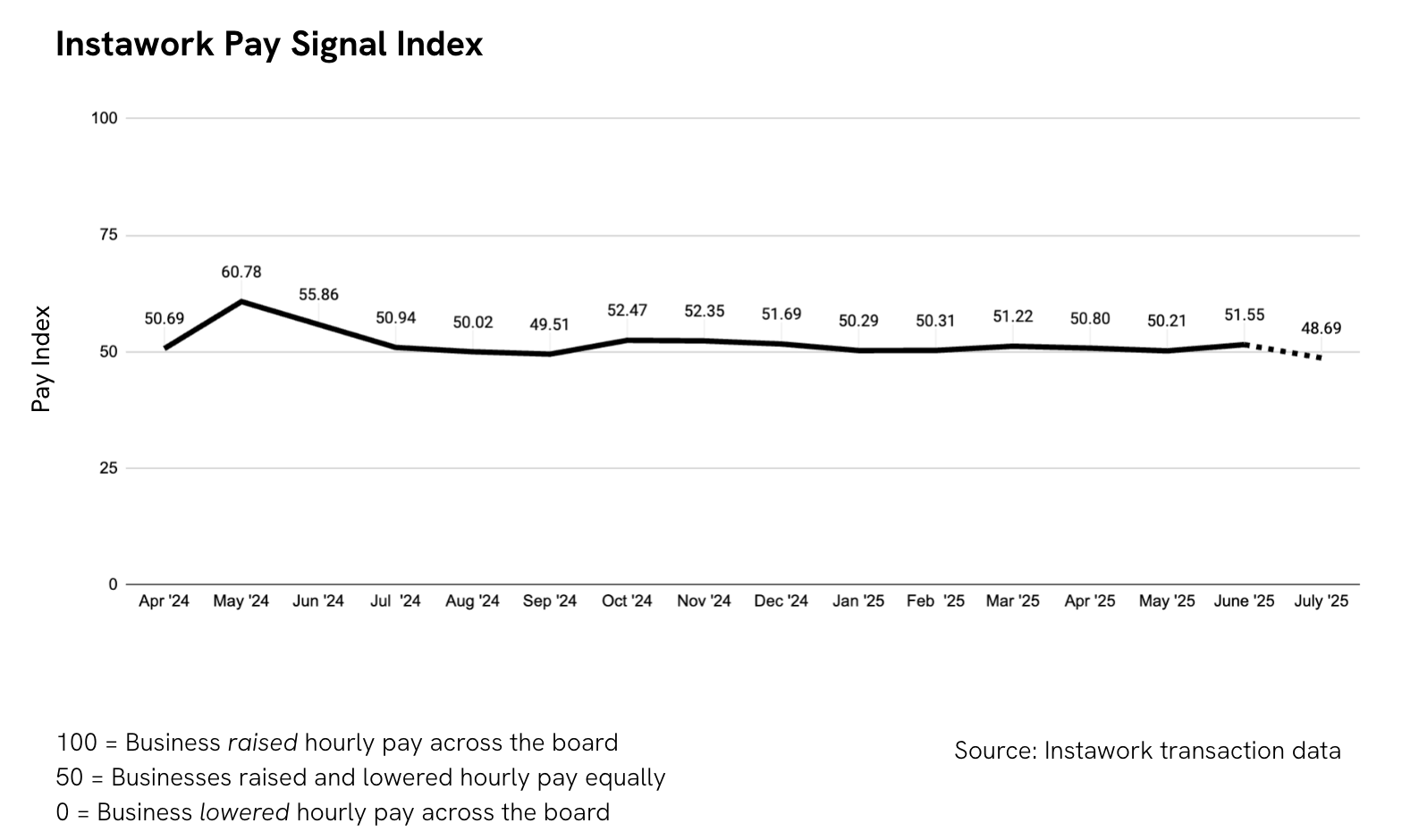
Instawork's pay trends data offers valuable insights into how businesses are planning their labor. This report focuses on data spanning April 2024 to June 2025, highlighting patterns and potential impacts for businesses employing hourly workers..
Consumer behavior patterns provide crucial context for understanding sectoral labor demands. U.S. consumer confidence declined sharply in June 2025, falling to 93 from 98.4 in May. However, retail sales data shows a more nuanced picture. Most recent retail sales data available shows that while overall sales fell 0.9% in May 2025, online sales rose 0.9%, and the control group (excluding volatile categories) increased 0.4%. This divergence suggests consumers are increasingly selective, favoring e-commerce channels over traditional retail—a shift that directly impacts warehouse labor demand.
While retail data for June isn’t available, industry analysts noted that June sales were "subdued" with the sales pace falling to its lowest level in the past 12 months, suggesting that consumer caution continued into June 2025. Instawork data suggests this is likely to be true as June pay trend is flat for warehouse associates, and declining for forklift drivers.
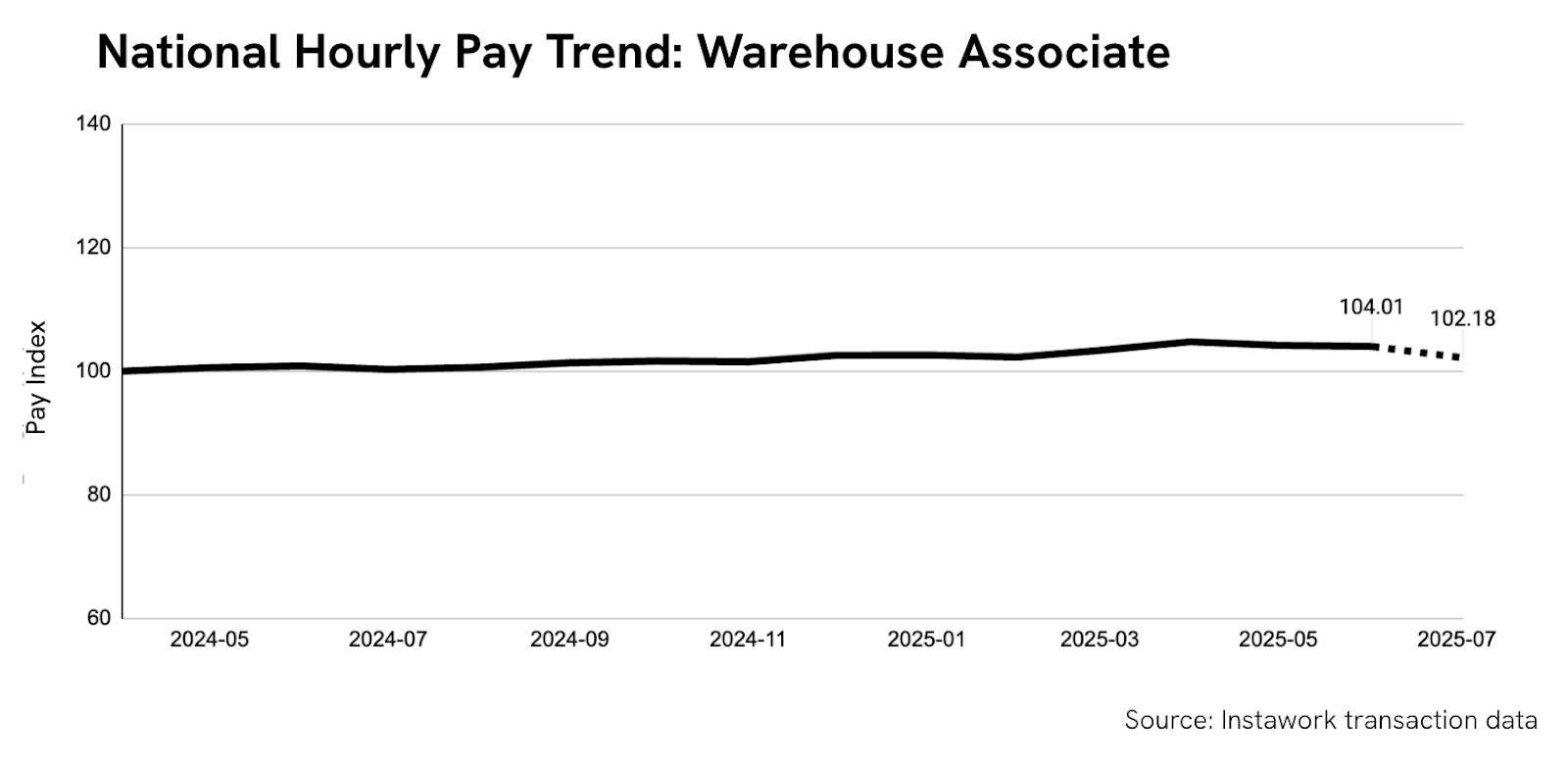
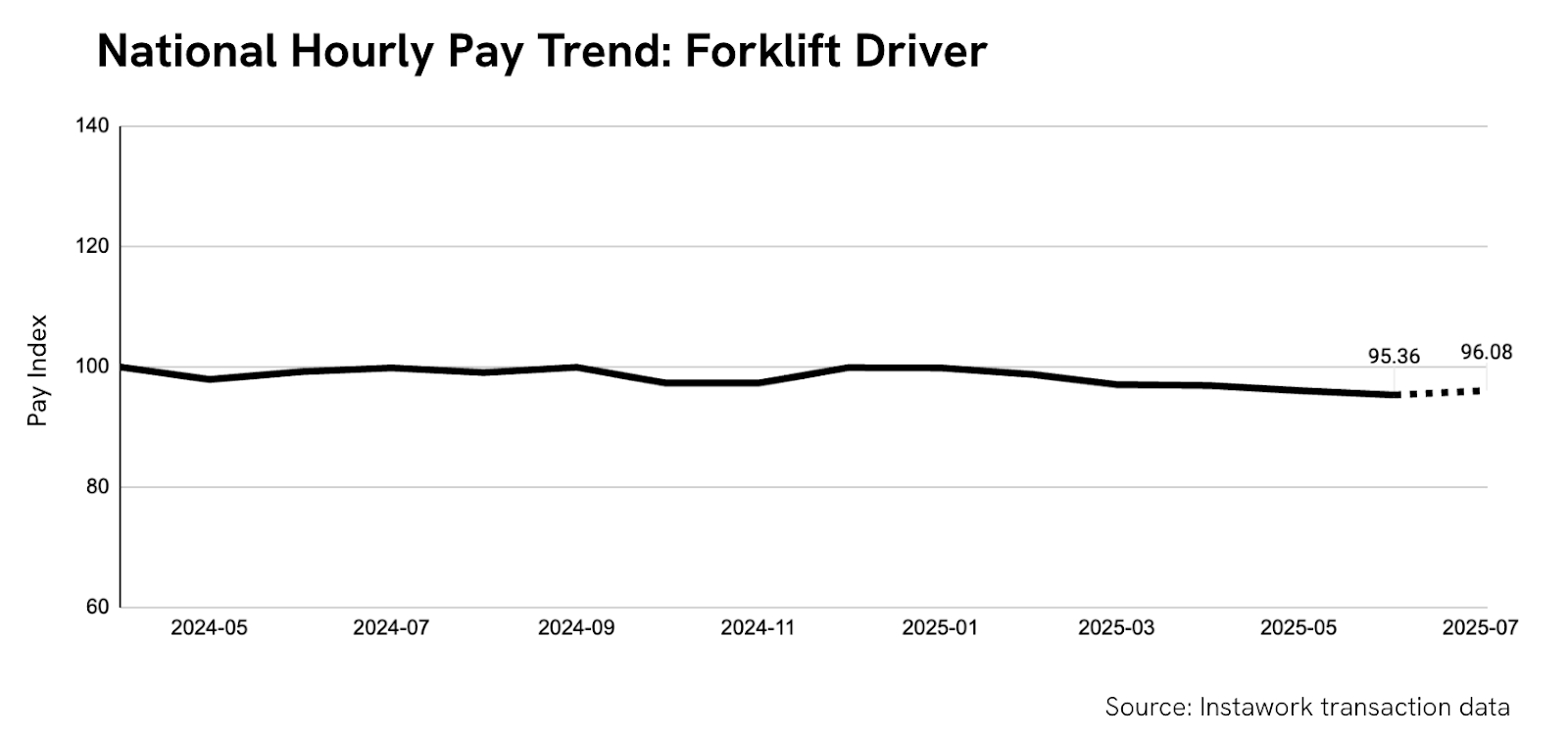
Between May and June 2025, average pay for all hospitality positions changes only marginally. Summer travel and events traditionally boost staffing needs, nudging pay signals modestly higher in roles tied directly to guest interactions.
The most recent data from the U.S. Census Bureau shows that eating and drinking places registered total sales of $97.4 billion on a seasonally adjusted basis in May 2025, representing a small 0.9% decline from April's $98.3 billion. Total consumer spending in restaurants stood 5.3% above year-ago levels in May, the third consecutive month with 12-month gains above 5%. These factors helped keep pay for hospitality workers largely stable.

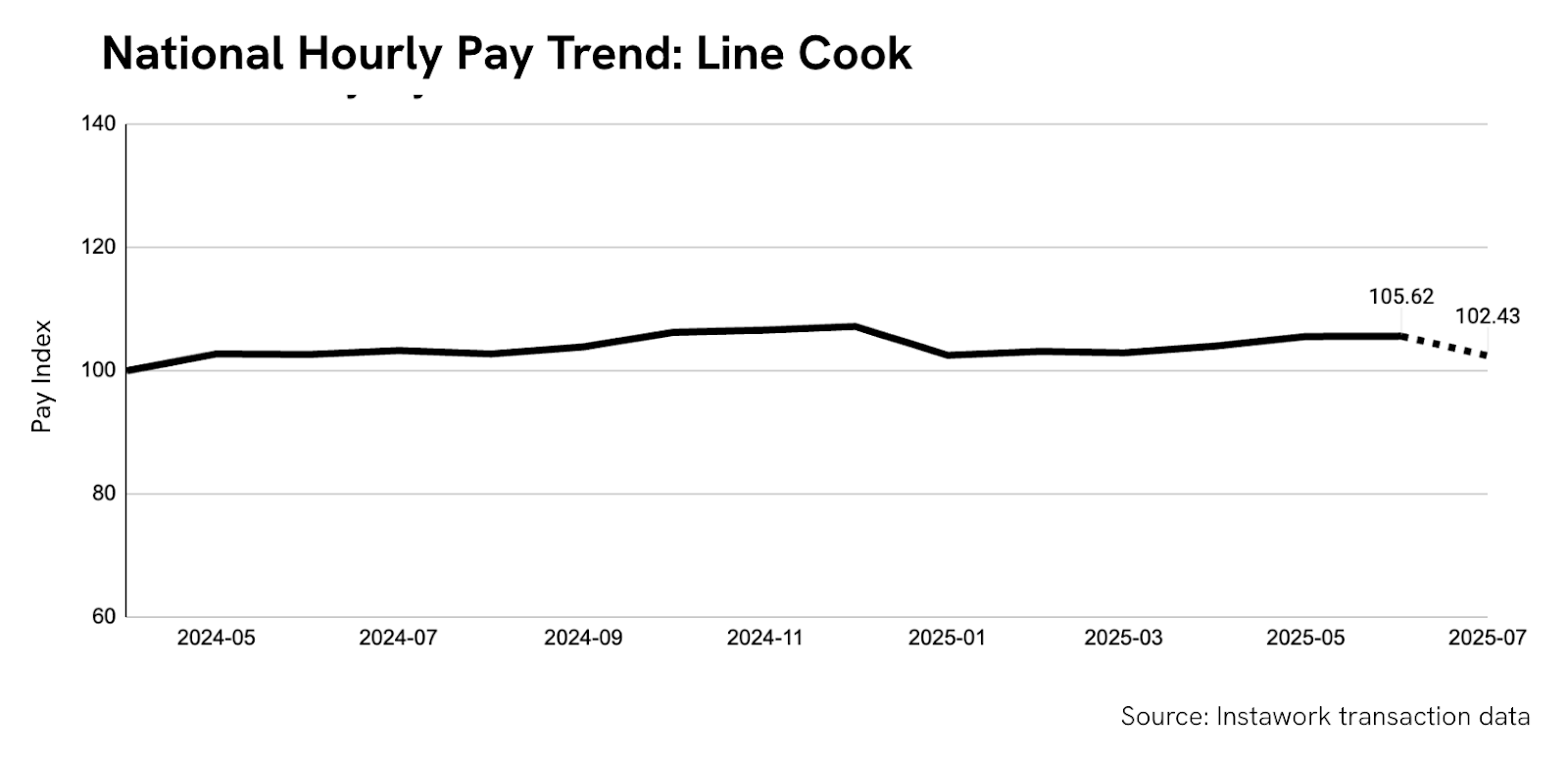
Each month, we survey Pros regarding their labor market experiences. June showed no changes in Instawork Pros’ expectations and ability to find flexible work on Instawork. After the tariff related shock in April, Pros had their expectations met around part-time work. Not surprisingly their ability to find full-time work is lower as businesses opt for flexibility in their labor planning.
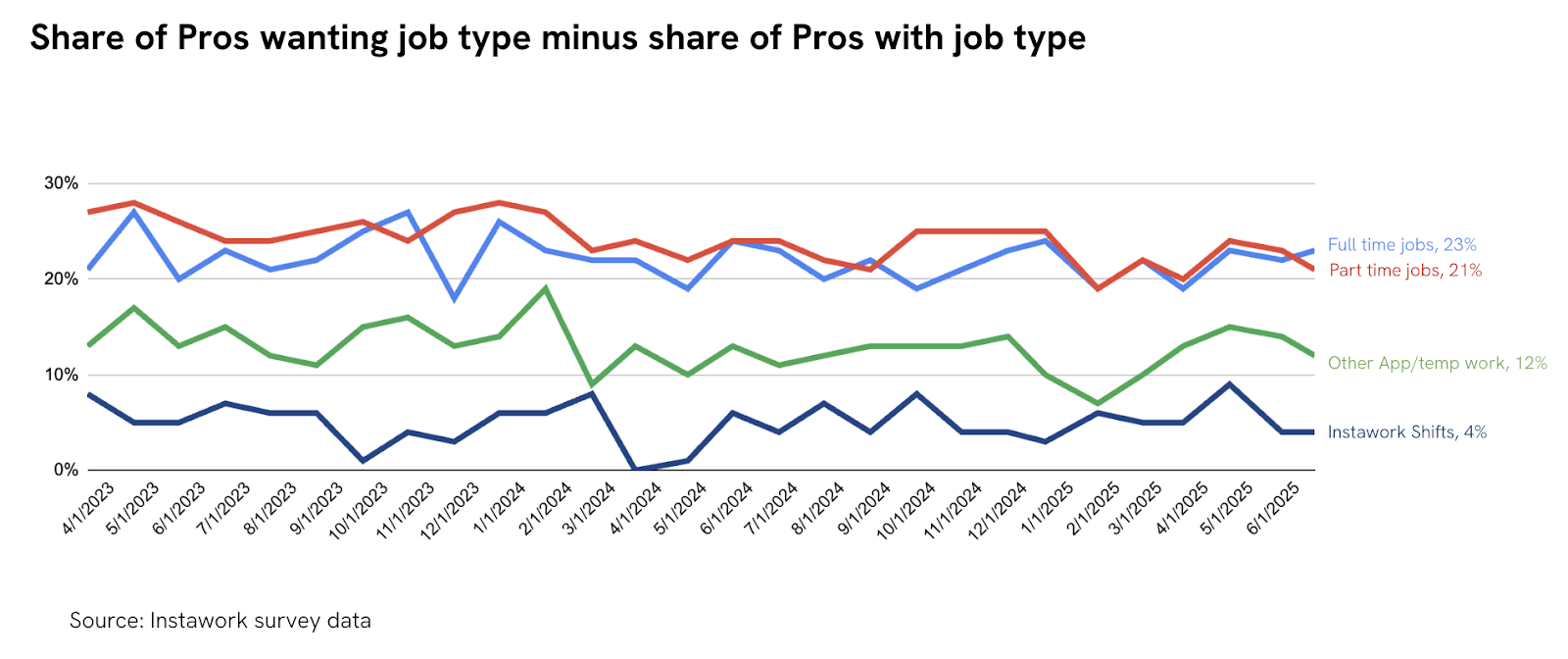
After a difficult start to the year, Instawork Pros ability to find between 20 and 40 hours of work has gotten better in each of the past two months. In June, more Instawork Pros are settling for working under 20 hours despite wanting to work more.
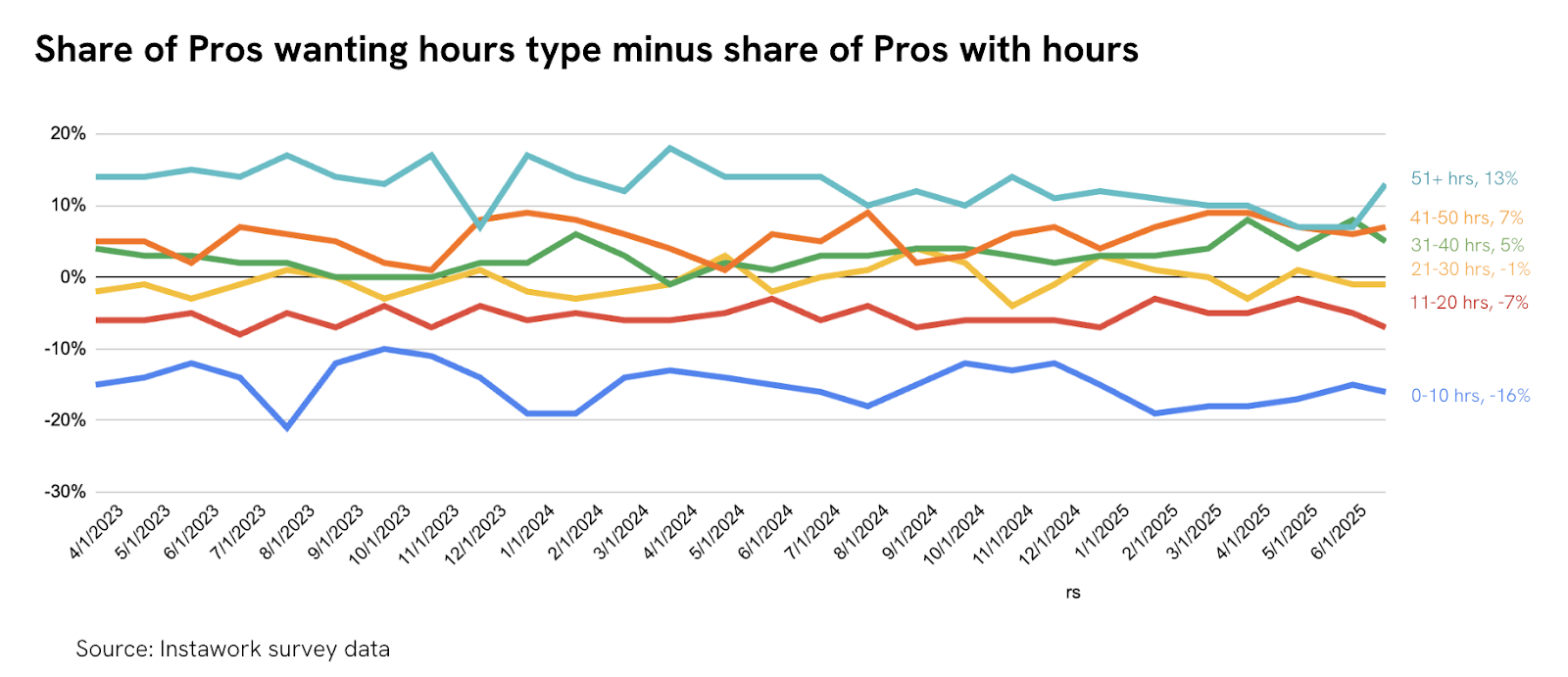
Unexpected economic or policy changes and rapid shifts in demand can all impact pay trends. Our forecasts are based on current data, and we continuously monitor the market for emerging factors. Make sure to subscribe to Instawork’s Economic Research for the latest analysis and insights into the hourly labor market.
About Instawork Pay Signal Index
The Pay Signal Index is the weighted ratio of Partners who have increased, decreased or not changed their hourly pay. We've mapped Instawork positions to Census Bureau's occupational groups that are representative of ~42% of US hourly workers. Starting this month, we are presenting reorganized, rebalanced, and re-indexed statistics with April 2024 as their base. You can read more about the Instawork Pay Signal Index methodology here.